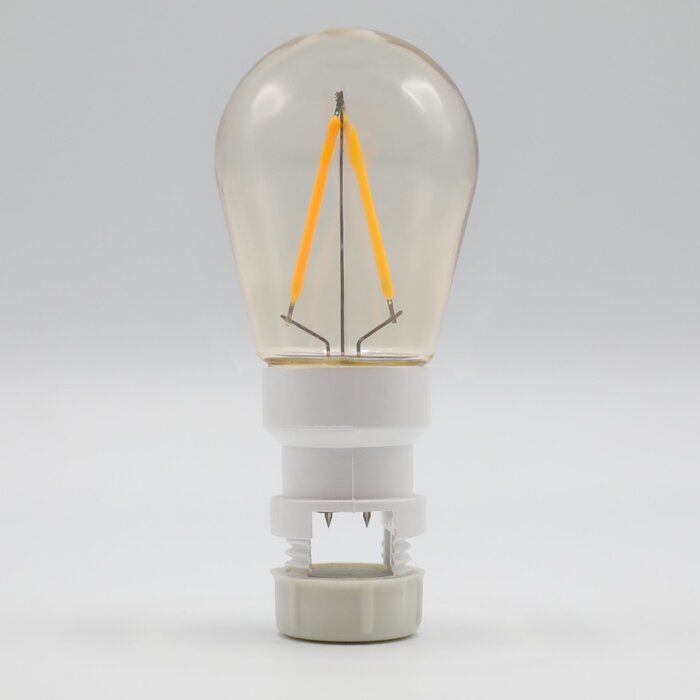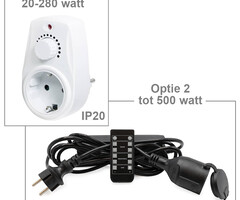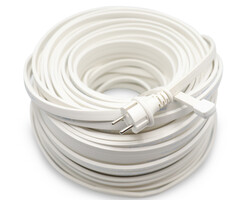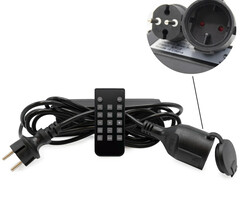
Belt bulb - 2W filament, dimmable (no E27 socket)
Would you like to have a festoon belt for the garden, and do you want to have the freedom to determine where the bulbs are attached to the belt? Thanks to our LumenXL "socket+LED" bulbs, you can put together a unique product. You determine the distance between bulbs on the festoon belt. These light bulbs do not have an E27 socket, but you "prick" them on a loose pricking cable, and then screw them in with an Allen key.
Atmospheric products
These 2W warm white filament bulbs are ideal for creating more atmosphere. The dimmable socket+LED bulbs are ideal for any application, because you can determine the light intensity yourself. This gives you the flexibility to adjust the amount of light to your own chosen setting for every occasion. Filament is the latest development in LED field. The beautiful, cozy atmosphere of the traditional light bulb is imitated, and in the mean time you make use of the advantages of LED lighting, such as the very low energy consumption and long life.
You can use our dimmers to dim the 2 watt filament socket+LED bulbs.
Progressive
This progressive model uses LED lighting in a new way. The bulb has no screw thread or sealing ring. Not only does this make the socket smaller and tighter, it gives great ease of use due to the 'plug and play' principle. You screw the bulbs onto your flat cable without sockets and you are ready to create atmosphere. Furthermore, this bulb is provided with a guaranteed IP level of 44 (this also applies to our standard festoon belts).
Durable products
These bulbs have an almost unbreakable polycarbonate shade. The bulbs are energy efficient and have a long life.
Explanation about the light color
The light color of white bulbs is expressed in Kelvin. We call 2000 Kelvin (2000K) 'extra' warm white. It is similar to the color of candlelight, the light is a bit more yellowish. 2650 Kelvin is the color of the light bulb, still warm white but less yellowish. The 6500 Kelvin bulbs have a cold white color. The Kelvin is a spectrum where the lower the number, the warmer the color. We sometimes have customers who find the 2000K too hot, but on the other hand, we also have customers who find the 2650K not warm enough. Fortunately, the vast majority of customers are satisfied with the initial choice they made for 1 of the two variants.















